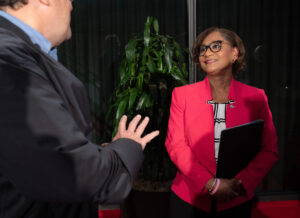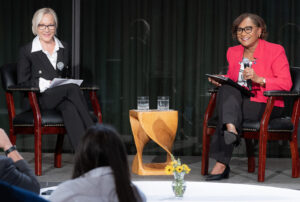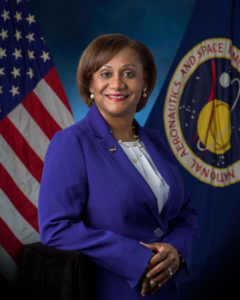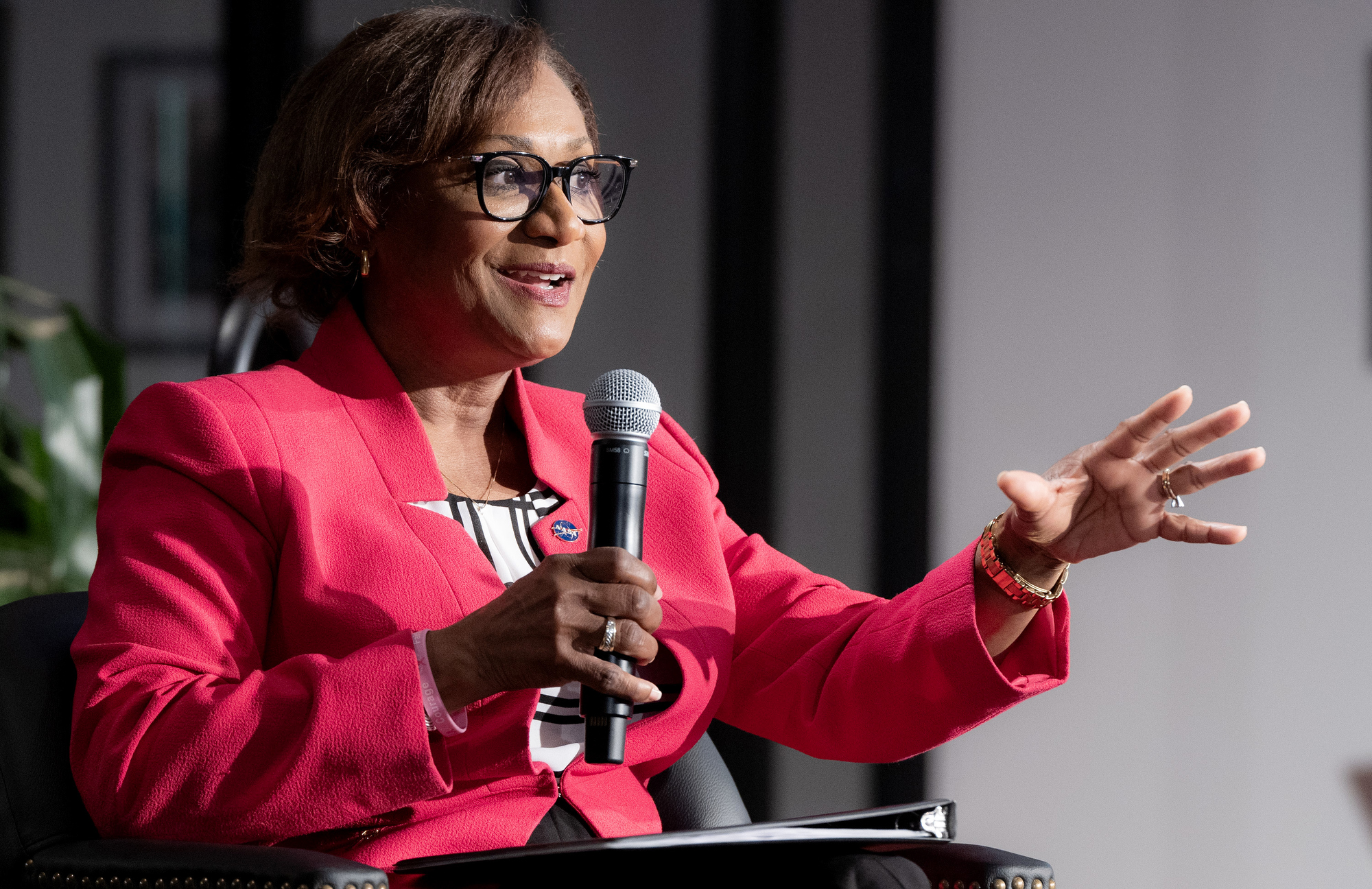This past Tuesday, space lovers and moon gazers alike made their way to the Lyndon B. Johnson Presidential Library in Austin, excited to hear a talk for the ages. Gwen Griffin, Chair of the Texas Space Commission Board of Directors, was joined by none other than Johnson Space Center Director Vanessa Wyche to speak about everything from Space X to space plans in a riveting conversation called Missions to Moons & Mars. Fortunately, Latinitas Magazine has a front row to the entire conversation, so here are some of the highlights.
From School To NASA
Director Wyche’s interest in the field began at an early age, “As a young kid, I was always just a curious kid–I just liked to figure things out, it was kind of my thing.” Wyche grew up in a small town in South Carolina, and it wasn’t until her college years that she discovered her love of engineering. She got her Undergraduate Degree in Engineering at Clemson University before obtaining her Master’s in Bioengineering. From there her work took her into the Food and Drug Administration, but that all changed when she met her soon-to-be husband, “I met a Texan,” Wyche joked, “and he asked me to marry him.” Relocating to The Lone Star State meant she was now on the job hunt and her impressive resume left NASA as an obvious choice. Wyche has been working for NASA for over 30 years now and has no intention of slowing down.
Rebuilding The Space Station

LBJ Library photo by Jay Godwin
One of the main topics Wyche covered is NASA’s future plans to build a new and improved International Space Station by 2030. For those unaware, the ISS has been in use for over twenty years now, “In 1998 were the first elements that were launched.” When it was first created, it was bare bones, only the essential things needed were implemented. With the technological advances that have been made, not to mention, the toll use has taken, things need to be revamped, “Think of your car, right? At some point, it’s going to not be useful. You can repair it, you can change the oil and parts, and that’s what we’ve been doing…But at some point, it will go past its useful life, and we will have to deorbit that particular space station.
“And we are working on those plans right now today…What is the strategy for deorbiting it so that it does not come and crash and hit anyone on Earth–that’s an important thing.” Wyche jokes, “And then making sure we have another platform that’s ready.” NASA is working with multiple companies, including Space X, to collaborate on the plans for a new ISS, “They’re all trying to reach a 2028 milestone. That’s what they’re trying to get to. So that if they can then have their platforms up and running by 2028–Of course, we know as I said that there’s gonna always be some issues that come up. So, if we give them a 2028 target and they get by 2029-2030, then that’s good.” Wyche stressed that most importantly, they don’t want to plan for a gap of time between the ISS being unavailable and a new one being implemented. Among many things, this is due to the large amount of scientific experiments in the ISS right now, “I would say there’s probably about 300-400 different science experiments that are going on. So we want all those people that are doing their research–So, think if you’re a researcher and you’re about right on the crux of this new discovery. You want to make sure that you have somewhere else to go.”

A New Space Mission: Artemis
Humans have not touched the surface of the moon since the 70s, but NASA, working alongside other companies, has plans to change that with their new Moon Mission: Artemis. Right now the group is in the testing phase, surveying the equipment in different environments to see if it’s trustworthy enough. Making changes to things like the heat shield or reworking how to use the platform so it takes minimal damage, “Once we get through that milestone, that would be the first time we’ll have humans going into these spaces since Apollo. And then, what our next step is to land on the lunar surface. So, we have two companies–Space X building Starship down in South Texas…they have a series of tests that they have to get through to actually have that capability ready.” With the other company being Blue Origin.
It should be noted that while the United States has landed on the surface of the moon, this would be the first time any other company or person would get to do so.
The Gateway To The Moon
“When I mentioned we’re doing things differently this time. What we’re doing is we’re building a small platform called ‘The Gateway’.” Wyche explained excitedly, “It will be an orbital platform near the moon that will allow us to have human-tended capabilities. We’ll be able to do some experiments and research. Most of it will be done autonomously because the plan would be for astronauts to go and spend about thirty days…We are currently in building The Gateway, we are testing The Gateway, we have elements right now that are being designed and tested all around the world,” Wyche explains.
The Why of It All
With every new advancement, there also comes the question of why. Why are we planning on going to the moon, what does that do for us as a collective down here on Earth? A question Wyche was happy to delve into.
“So we’re going to the South Pole of the moon. Through work that we have done over the years, we have strong evidence that there’s ice that we can take. And we can actually use that to have water, oxygen, the things we need for Earth…The other thing that we want to learn how to do from an expiration standpoint is learning to live on another body. Because then that will allow us to learn what we need to have to go to Mars. To be able to have the ability to do exploration there, and to go deeper and deeper into the solar system.”
Keep in mind that while the ISS is only 250 miles away from Earth, the Moon is roughly 250,000, with Mars being much, much further.
Anyone Can Work at NASA
The last thing Wyche stressed before her time was up, was just how many resources NASA actually needs, “It’s those smaller things. I think about the space suits, you know someone has to actually literally sew those suits. They’re hand-sewn. These are not like mass-produced in some factories. And so they’re smaller mom-and-pop companies that we need to have.” Engineers are amazing, but not the only type of person who can work at NASA, seamstresses, Communications jobs, translators, the list goes on and on.

Director Wyche was incredibly insightful, and by the end of the talk, I felt like I had more of a grasp of why Space is so important and more of an excitement for the endless possibilities that lay ahead.











